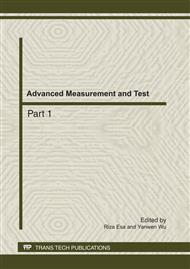p.1749
p.1754
p.1760
p.1765
p.1771
p.1777
p.1782
p.1789
p.1795
Quantitative Relationship of Electro-Optic Characteristics in AC Corona Discharge under Different Voltage and Humidity
Abstract:
In recent years, more attention is given to solar blind ultraviolet (SBUV) detection in corona discharge detection and defect diagnosis of partial discharge has been widely used. However, there are still such key techniques should be further studied such as electro-optic characteristics and the quantitative relationship between corona current and UV emission intensity in the process of corona discharge. With different AC voltage and different humidity, corona current and UV pulses are measured. It is shown that corona current and pulse number rise with the voltage mounting up, and decline very weakly with humidity increasingly. In addition, further discusses about the quantitative relationship between electro-optic parameters is implemented by using transfer function. The experiment results, under the conditions of different AC voltage and different humidity, indicate that transfer function maintained between 2.00 to 4.25 changes little, varied no more than 52.9%. UV pulse number, therefore, can be used to characterize corona current intensity. The conclusions above are significant for characterizing the level of corona discharge directly by UV emission intensity, and they are helpful for improving the accuracy of defect diagnosis.
Info:
Periodical:
Pages:
1771-1776
Citation:
Online since:
July 2011
Keywords:
Price:
Сopyright:
© 2011 Trans Tech Publications Ltd. All Rights Reserved
Share:
Citation:


